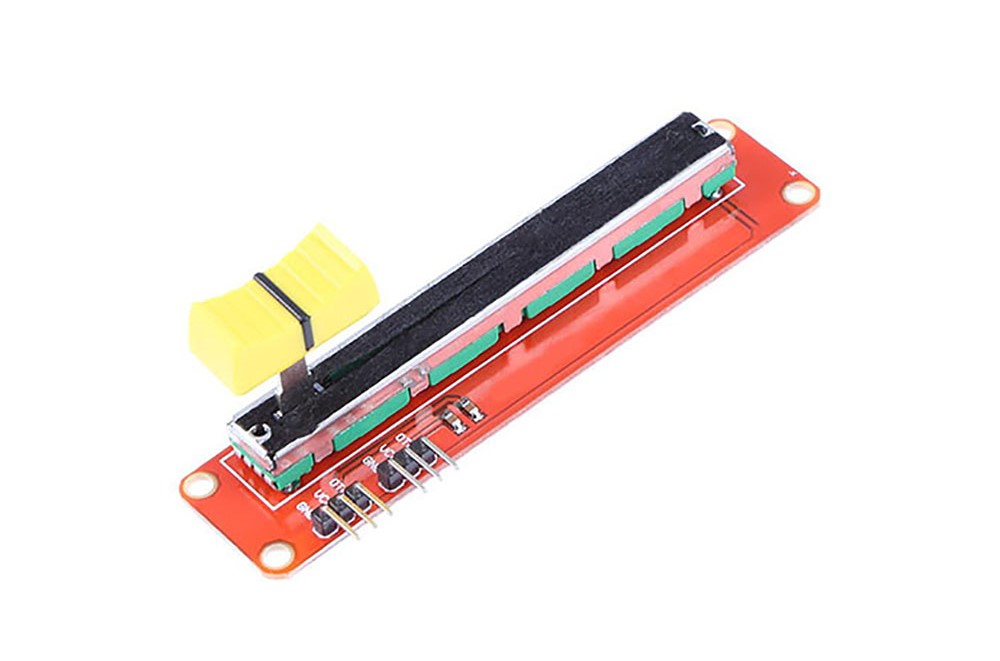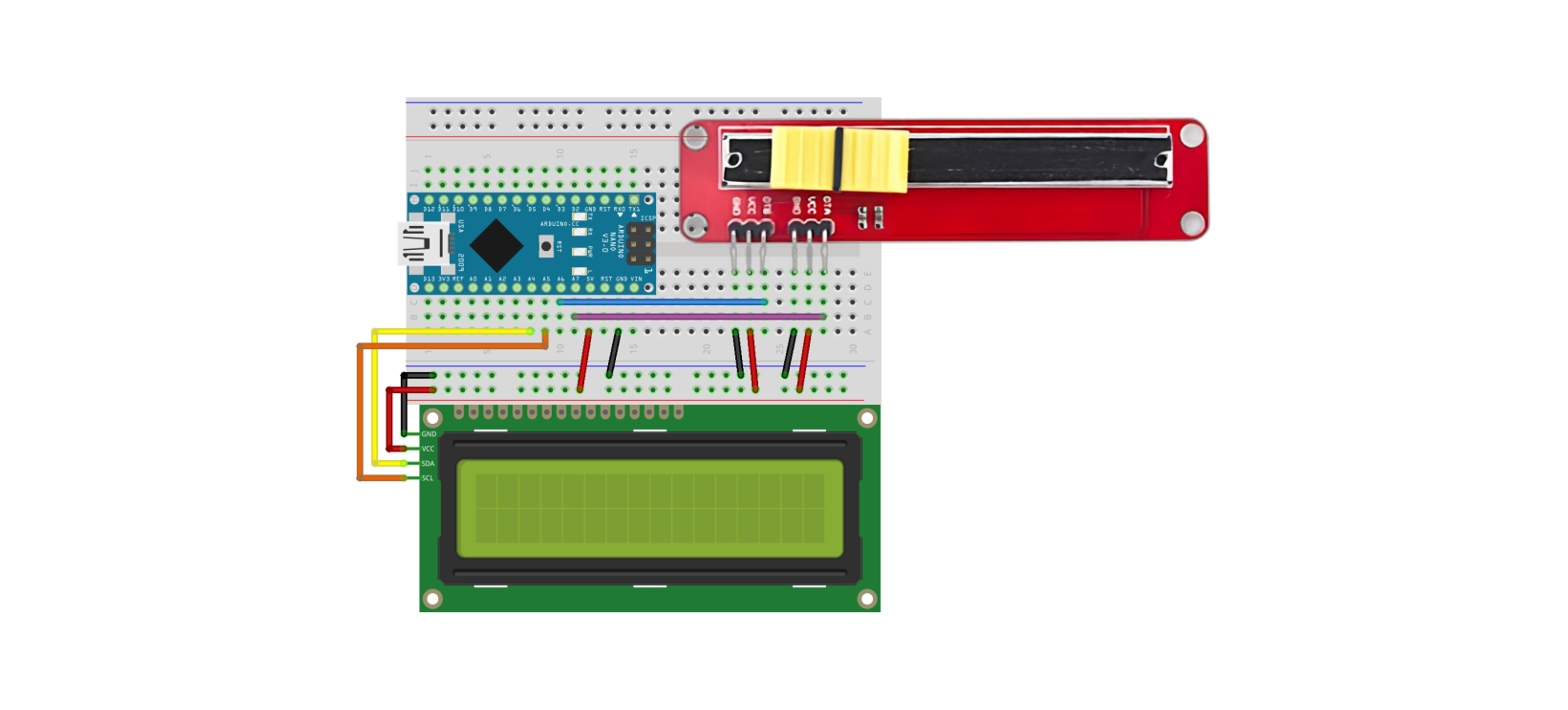Slide Potentiometer Module: 두 판 사이의 차이
(Created page with "{{#seo:|title=아두위키 : 아두이노 슬라이드 가변저항 가이드|title_mode=append|keywords=아두이노, 정보과학, 메이커학습, 수행평가, 슬라이드 가변저항, 아두이노 작품, 캡스톤작품, 아두이노 예제코드|description=아두이노로 슬라이드 가변저항을 제어하는 방법(기본정보, 회로, 예제 코드)을 소개합니다. 정보과학과 메이커수업에 활용가능합니다.}} File:슬라이드가변...") |
잔글편집 요약 없음 |
||
| 96번째 줄: | 96번째 줄: | ||
=== Execution Result === | === Execution Result === | ||
<div class="coders70"> | |||
<youtube> ZKuv4MutCbI </youtube> | |||
</div> | |||
2024년 7월 10일 (수) 14:30 기준 최신판

It's a component capable of varying resistance values. It can be used for adjusting volume or the brightness of light.
Specifications
- Recommended Input Voltage: 3.3V ~ 5V
- Two analog output pins (output values are the same for both pins)
- 10Kohm
Example Required Hardware
- Arduino board
- Jumper cables
- Slide potentiometer module
- LCD1602
Connection
| Arduino | Slide Potentiometer Module | LCD |
| 5V | VCC, VCC | VCC |
| GND | GND, GND | GND |
| A4 | SDA | |
| A5 | SCL | |
| A6 | OTB | |
| A7 | OTA |

Example Code
This example demonstrates how to display the values from the slide potentiometer on an LCD screen.
Please refer to the link for instructions on using the LCD.
#include <Wire.h>
#include <LiquidCrystal_I2C.h>
LiquidCrystal_I2C lcd(0x27, 16, 2);
const int otb = A6;
const int ota = A7;
int val1 = 0;
int val2 = 0;
void setup() {
lcd.init();
lcd.backlight();
lcd.setCursor(0, 0);
lcd.print("OTA:");
lcd.setCursor(0, 1);
lcd.print("OTB:");
}
void loop() {
if (val1 != analogRead(ota)) {
val1 = analogRead(ota);
for (int i = 4; i < 8; i++) {
lcd.setCursor(i, 0);
lcd.print(" ");
}
lcd.setCursor(4, 0);
lcd.print(val1);
}
if (val2 != analogRead(otb)) {
val2 = analogRead(otb);
for (int i = 4; i < 8; i++) {
lcd.setCursor(i, 1);
lcd.print(" ");
}
lcd.setCursor(4, 1);
lcd.print(val2);
}
delay(300);
}
Execution Result